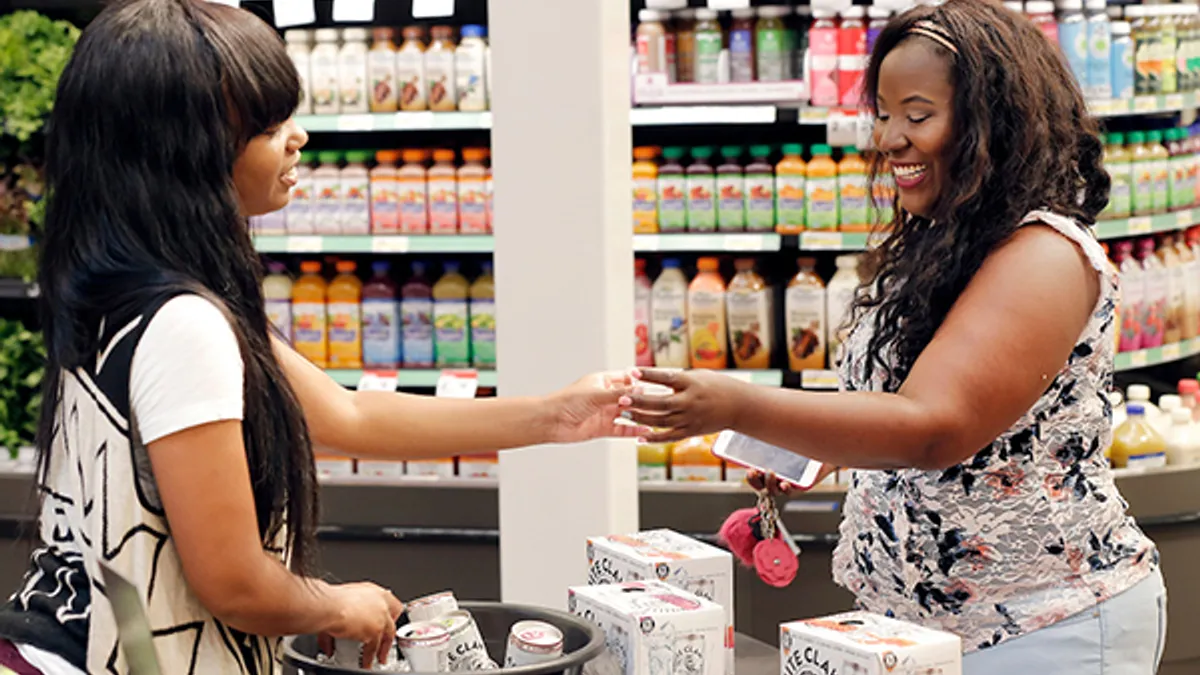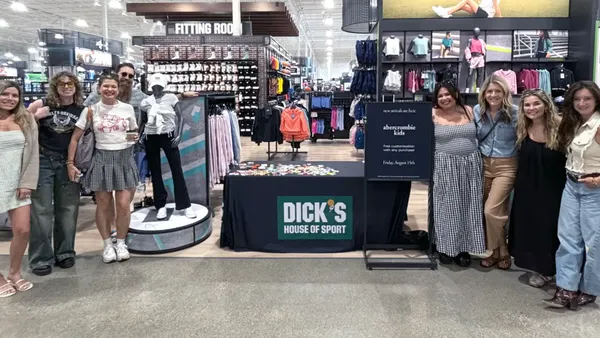Dive Brief:
-
Retailers are losing customers fast as frustration builds when store associates are nowhere to be found. A third of customers who experienced a problem at apparel stores were not able to locate sales help, and 6% of all possible sales are lost because of lack of service, according to a report from the Massachusetts Institute of Technology’s Sloan School of Management emailed to Retail Dive.
-
In a study of one apparel chain, researchers found the retailer was achieving 85%-95% of potential sales with its staffing levels and determined that basing staffing on past sales was missing the boat because that didn’t take into account lost sales due to understaffing.
-
Sloan researchers developed a data-driven method to determine optimal staffing levels, using aggregate labor requirements from traffic, point-of-sale and labor data across stores with similar attributes like store format, product mix and market demographics. That could increase sales by some 10%, achieving closer to 99% of sales, according to the report.
Dive Insight:
Retailers with physical stores still have a decided advantage, especially in apparel where many consumers still want to see, touch and try on the merchandise as well as get help from associates before immediately taking home items. But it's not much of an advantage if stores can’t deliver top customer service or manage their merchandise and store experiences — activities dependent on having enough workers on hand.
With store staffing more important than ever yet one of the biggest expenses for retailers, researchers, led by visiting professor Rogelio Oliva, said in the report that they have developed a platform to achieve optimal staffing levels.
Traditionally, staffing decisions depend on store budget allocation, matching a constant ratio of expected store sales to the number of store associates. But that ignores how retail sales are also affected by store traffic, not just past sales, potentially leading to labor-to-traffic mismatches. When scheduled labor is unable to meet customer traffic flows, sales suffer, and that’s especially crucial at the holidays, Oliva said in a statement.
Anticipating traffic, however, is tricky for retailers, which in the past have relied on "just in time" scheduling — keeping staff on call to come in during unanticipated rushes and sending them hope during lulls. But that practice has come under fire. Though such scheduling policies seem to be a way to save money, they’re not necessarily saving sales.
"The ability to efficiently match store labor with incoming customer traffic is crucial, especially during the holidays when stores expect increased traffic and often rely on year-end sales," Oliva said. "But optimizing staffing levels is very challenging, as retail environments are characterized by volatile store traffic, which makes it difficult to provide consistent service quality."
Boosting staffing levels generated enough incremental sales to offset the increased labor costs — to a point — the researchers found. There’s a limit to the number of staff that can be added before stores reach a point of diminishing returns. The goal is to use data to find a "sweet spot" in the ratio of sales people to customers.
"The big takeaway is that retailers need to move past the inclination to minimize cost by understaffing stores because it has a big impact on profitability," Oliva said. "They could be generating a lot more sales if they staff at the correct level. Stores should staff to maximize sales and profit, not to minimize cost."













